There are 26 companion plants for peonies in this list including different flowers, trees, shrubs, and even herbs. It should’nt be a surprise that the majority of the Peony companions are flowers since Peonies themselves are flowers.
Peonies are lovely and fragrant perennial plants that require specific care to thrive and bloom. These blooming plants have been grown for generations and come in a variety of colours and shapes, making them a great addition to any garden or landscape. It is critical to offer the correct growing conditions for peonies in order to promote healthy development and blooming.
Peonies grow best in well-drained soil that is rich in organic matter and has a pH of 6.5 to 7. They require at least six hours of direct sunlight every day but may also thrive in partial shade. Watering should be done on a regular basis to keep the soil equally wet but not saturated. Overwatering can cause root rot, which can be harmful to the plant.
Peonies might benefit from frequent applications of compost or well-rotted manure in early spring to promote healthy growth and flowering. They do not require significant fertilizing, although a balanced fertilizer can be sprayed after flowering to promote vigorous root development.
Peonies are subject to pests and diseases like fungal diseases, mites, and aphids. Companion planting with plants like garlic, chives, and mint can help prevent these concerns. These plants resist pests while attracting helpful insects. Furthermore, keeping the space surrounding the Peony clean and clear of waste might assist in controlling pests and illnesses.
In this article, we will be looking into Twenty-Six (26) Good Companion plants and Bad Companion plants for Peonies. We will also discuss why they are good and bad for your beautiful peonies.
Table of Contents
Good Companion Plants for Peonies
Flowers
1. Ajuga

- Botanical name: Ajuga reptans
- Sun Requirements: Partial shade to full sun
- Soil Type: Moist, well-drained soil, pH 6.0-7.5
Companion planting is a time-honored gardening strategy in which diverse plants are grown alongside one another to develop mutually beneficial interactions. Ajuga is a superb companion plant for Peony, amplifying soil nutrients, reducing insect infestations, and enhancing garden durability.
Ajuga is a low-growing perennial that blooms in late spring and early summer with bright blue or purple flowers. Because it thrives in partial shade and wet soil, this plant is ideal for planting behind peonies.
Furthermore, Ajuga generates thick leaves that can help retain moisture, minimize soil erosion, and discourage plant development, minimizing resource competition. Peonies, in turn, provide Ajuga with protection and support, resulting in an aesthetically beautiful and sustainable garden ecology.
To achieve maximum success, plant Ajuga at a distance from peony roots to avoid overcrowding and stunted development. Companion planting peonies and Ajuga may result in a healthy, lively, and diversified utilitarian and visually beautiful landscape with the proper care and attention.
2. Anemone

- Botanical name: Anemone spp.
- Sun Requirements: Partial shade to full sun
- Soil Type: Moist, well-drained soil, pH 5.5-7.0
Anemones make great companion plants for peonies as they prefer similar growing conditions, and their delicate foliage can help to hide the dying foliage of peonies. Anemones may also give some much-needed colour to the garden after the peony blossoms have gone.
However, it is essential to note that certain varieties of anemones can be aggressive spreaders and may need to be contained to prevent overcrowding.
3. Astilbe

- Botanical name: Astilbe spp.
- Sun Requirements: Partial shade to full shade
- Soil Type: Moist, well-drained soil, pH 6.0-7.0, rich in organic matter
Because they enjoy comparable growth conditions as peonies, astilbes make excellent companion plants. The fern-like leaves of Astilbes may be used to disguise the unattractive stems of peonies once they have stopped flowering.
Astilbes can also attract beneficial insects like lacewings and ladybugs, which aid in the control of pests that can harm peonies. Astilbes can add some much-needed color to the garden after the peony blooms have faded.
4. Bee balm
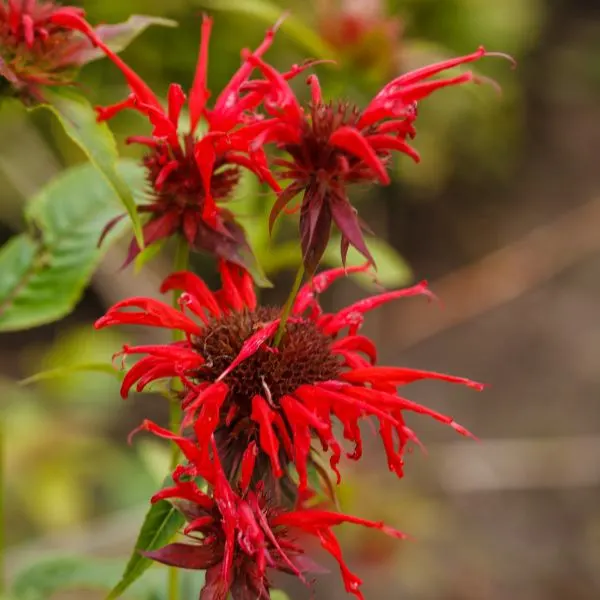
- Botanical name: Monarda spp.
- Sun Requirements: Full sun to partial shade
- Soil Type: Moist, well-drained soil, pH 6.0-7.5, enriched with organic matter
Bee balm is an excellent companion plant for peonies because it attracts pollinators such as bees and butterflies, increasing the yield of both crops. The fragrant leaves of bee balm also help deter some pests that may harm peonies. Bee balm’s tall, spiky flowers make an excellent backdrop for peonies’ large, showy blooms.
5. Bleeding hearts
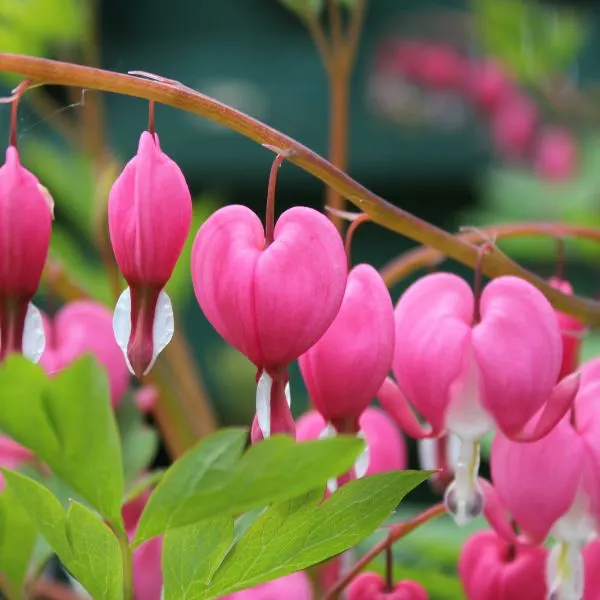
- Botanical name: Lamprocapnos spectabilis
- Sun Requirements: Partial shade to full shade
- Soil Type: Moist, well-drained soil, pH 6.0-7.5
Bleeding hearts are a fantastic companion plant for peonies as they demand similar growth conditions, and their fragile foliage can assist in disguising the withering leaves of peonies. Bleeding hearts may also add some much-needed colour to the garden after the peony blossoms have faded.
However, it is important to note that bleeding hearts can spread rapidly and may need to be divided regularly to prevent overcrowding.
6. Campanula
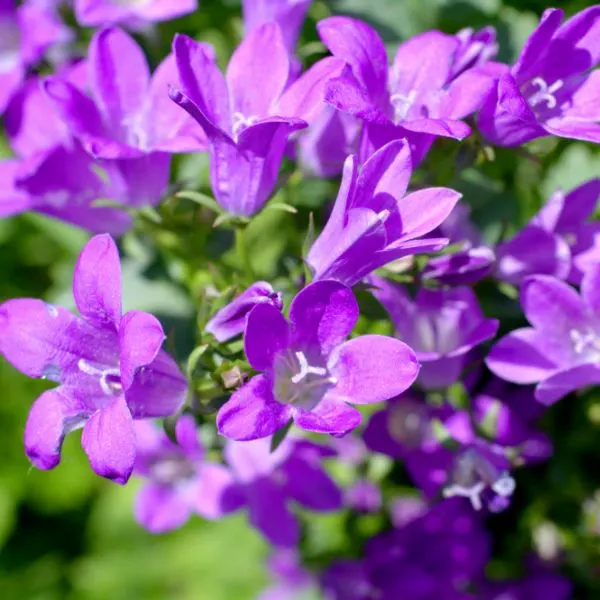
- Botanical name: Campanula spp.
- Sun Requirements: Partial shade to full sun
- Soil Type: Moist, well-drained soil, pH 5.5-7.5
Campanulas are ideal companion plants for peonies since their tall spires of flowers may create a magnificent backdrop for the enormous, flamboyant blooms of peonies. Campanulas are also known to attract helpful pollinators like bees and butterflies, which can help both crops yield more. Furthermore, the delicate foliage of campanulas can be used to conceal the dying foliage of peonies.
7. Columbine
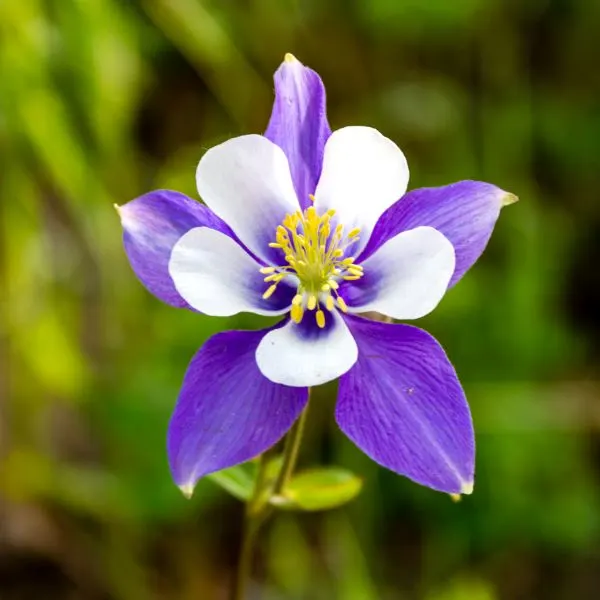
- Botanical name: Aquilegia spp.
- Sun Requirements: Partial shade to full sun
- Soil Type: Moist, well-drained soil, pH 6.0-7.0
Columbines are wonderful companion plants for peonies since they may attract hummingbirds and bees, which assist in boosting the output of both crops. Furthermore, the delicate foliage of columbines may be used to conceal the withering foliage of peonies.
After the peony blossoms have gone, columbines may bring some much-needed colour to the landscape. It is crucial to remember, however, that columbines are short-lived perennials that may need to be renewed on a frequent basis.
8. Daylilies
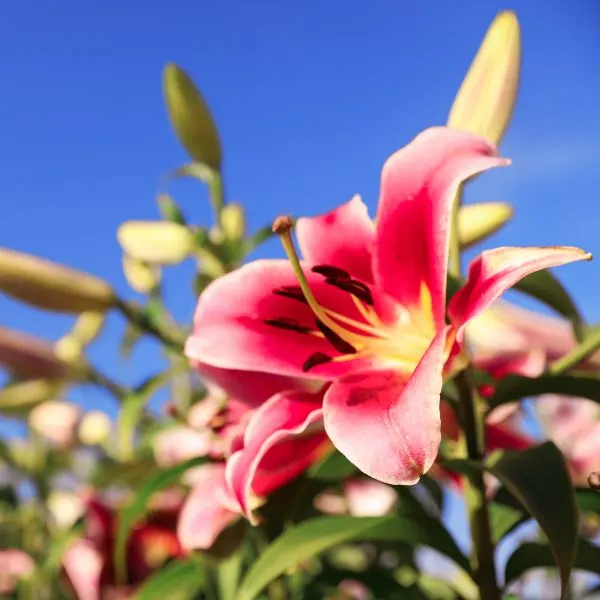
- Botanical name: Hemerocallis
- Sun Requirements: Full sun to partial shade (4-6 hours of direct sunlight per day)
- Soil Type: Well-drained soil, pH 6-6.5, rich in organic matter
Peonies and daylilies make excellent garden companions. Daylilies come in a broad range of colors and bloom dates, so they may complement and lengthen the flowering period of peonies.
Daylilies have a shallow root structure, which allows them to coexist with peonies without competing for nutrients or water. Daylilies are also noted for their capacity to resist pests like aphids, which may be detrimental to peonies.
In terms of style, daylilies may give a lovely contrast to peonies with their long, thin foliage and trumpet-shaped blooms. Plant daylilies in the same colour family as the peonies for a more harmonious effect. Alternatively, you may create a striking colour contrast by teaming red or orange daylilies with white or pink peonies.
Overall, daylilies are an excellent choice for peony companion planting. They offer colour, lengthen the flowering season, and guard against pests, and their shallow root structure allows them to cohabit quietly alongside peonies.
9. Dianthus
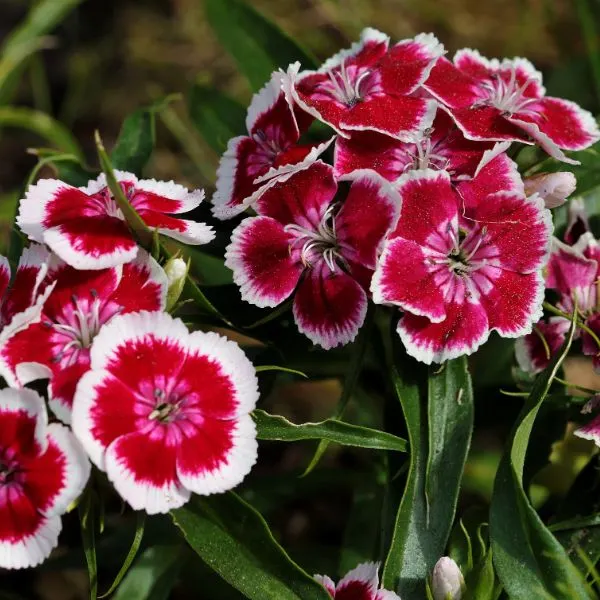
- Botanical name: Dianthus spp.
- Sun Requirements: Full sun
- Soil Type: Well-drained soil, pH 6.0-7.5, enriched with organic matter
Dianthus is another excellent peony companion plant. They are little, low-growing plants with beautiful flowers that may complement larger, showier peonies. Dianthus is a tough plant that thrives in well-drained soil, making it an excellent companion plant for peonies.
One of the primary advantages of combining dianthus with peonies is that they attract helpful insects like bees and butterflies. These insects can aid in pollination, resulting in more profuse flowers. Furthermore, dianthus is resistant to many common garden pests, which can assist in safeguarding the Peony.
When planting dianthus with peonies, keep their spacing needs in mind. This is to allow for proper air circulation; dianthus should be planted at least 6 inches apart. It is also critical that the dianthus does not shadow the peonies, which prefer full light to grow.
Dianthus may be used to create a bright border around peony beds, or it can be distributed throughout the bed for a more natural effect. They come in a number of hues, including pink, red, white, and purple, so you may match them to your peonies.
Overall, dianthus is an excellent peony companion plant. They attract helpful insects, defend the garden from pests, and offer colour and intrigue.
10. Foxglove
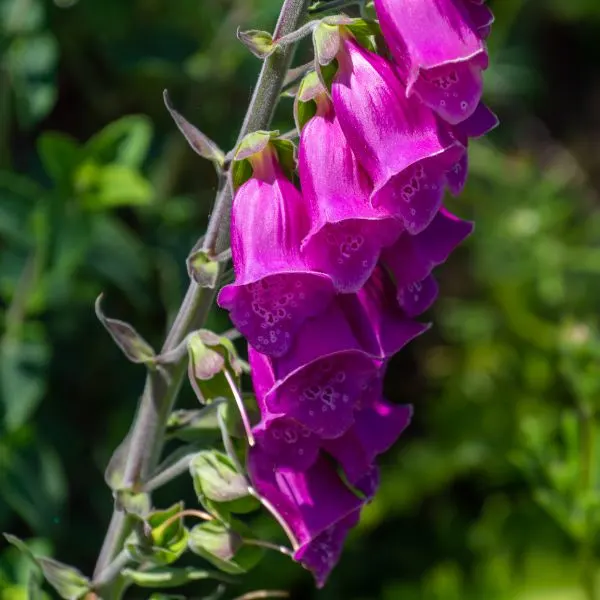
- Botanical name: Digitalis purpurea
- Sun Requirements: Partial shade to full sun
- Soil Type: Moist, well-drained soil, pH 5.5-7.0
Foxgloves, or Digitalis, are tall, majestic perennials that look great in cottage gardens. These plants produce bell-shaped blooms in pink, white, yellow, and purple. Because they provide height and contrast to the garden bed, foxgloves are a wonderful companion plant for peonies.
Foxgloves attract bees and hummingbirds, which is another advantage of growing them with peonies. Pollinators drawn to foxgloves can aid in improving peony pollination, resulting in a more bountiful crop. Foxgloves also serve to resist pests that might destroy peonies, such as Japanese beetles.
When combining foxgloves and peonies, it’s critical to consider the time of their blooms. Peonies bloom later in the season than foxgloves, which normally blossom in early July. This means that while peonies are in flower, foxgloves may create a lovely backdrop. When the foxgloves have completed flowering, trim the stems back to the ground to let the peonies take centre stage.
Finally, combining foxgloves and peonies can benefit both plants. They have comparable soil requirements and may both attract and repel pollinators and pests. In the early summer, foxgloves may make a lovely backdrop for peonies, creating a magnificent show in your yard.
11. Geraniums

- Botanical Name: Pelargonium
- Sun Requirements: 4-6 hours of full sun per day, can tolerate partial shade
- Soil Type: Well-drained soil, pH 6.0-7.5, with moderate fertility
Peonies and geraniums complement each other well in the garden since they thrive in comparable conditions and give complementary advantages. Geraniums are low-maintenance plants that thrive in well-drained soil and moderate shade, making them an excellent partner for peonies.
Geraniums also assist in preventing pests and attract beneficial pollinators like bees and butterflies to the garden. Their vivid blossoms also make a lovely contrast to the peonies’ huge, showy petals.
However, geraniums may expand fast and need to be clipped back regularly to prevent them from overwhelming the peonies. Plant geraniums at least 12 inches apart from peonies to ensure success and select smaller kinds that will not compete for resources.
12. Hardy geraniums
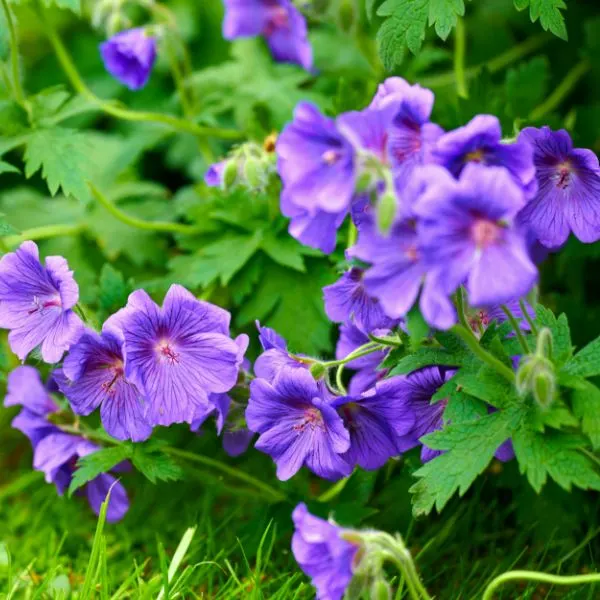
- Botanical name: Geranium spp.
- Sun Requirements: Full sun to partial shade
- Soil Type: Well-drained soil, pH 6.0-7.5, enriched with organic matter
Hardy geraniums, sometimes known as cranesbills, are another excellent peony companion plant. They require comparable growth conditions to conventional geraniums and give many of the same benefits.
On the other hand, Hardy geraniums are often more compact and have a longer bloom time, making them an excellent choice for planting in front of or near peonies. They also produce the good ground cover and aid in weed suppression, which benefits the Peony by lowering resource competition.
Plant hardy geraniums at least 12 inches apart from peonies to provide adequate room, and pick kinds that bloom at different times to lengthen the flowering duration.
13. Iris
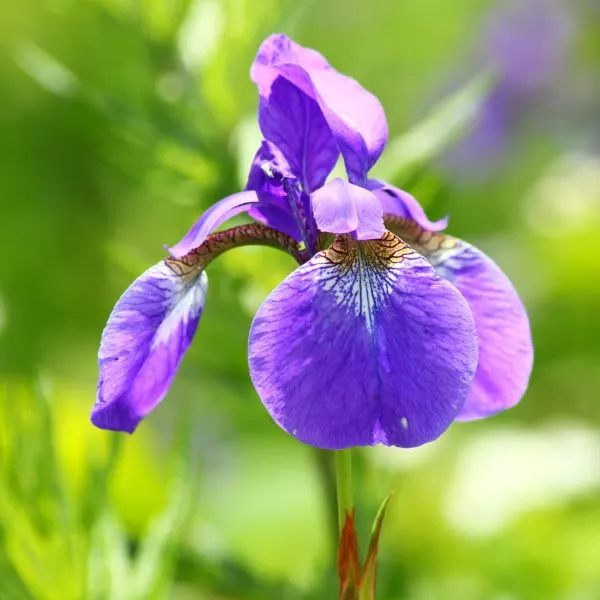
- Botanical name: Iris sibirica
- Sun Requirements: Full sun to partial shade
- Soil Type: Moist, well-drained soil, pH 5.0-6.5, rich in organic matter
Peonies and iris form a wonderful garden combo because they have enormous, spectacular flowers that complement each other’s hues. Iris plants grow similarly to peonies, requiring well-drained soil and full sun to light shade.
They also act as a natural deterrent to pests like deer and rabbits, which may be problematic for peonies. However, it is crucial to remember that iris plants can be sensitive to overwatering. Therefore, they should not be planted in locations with poor drainage.
To ensure success, plant the iris at least 12 inches apart from the peonies and select kinds that bloom at various times to produce a longer flowering period.
14. Lady’s mantle
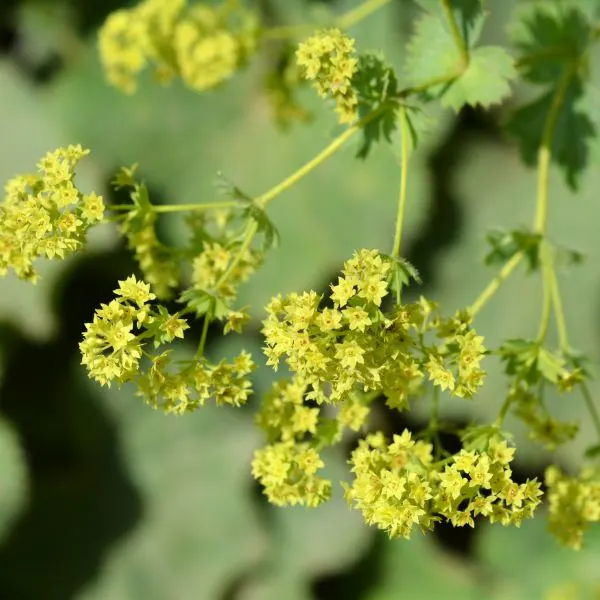
- Botanical name: Alchemilla mollis
- Sun Requirements: Partial shade to full sun
- Soil Type: Moist, well-drained soil, pH 6.0-7.0, rich in organic matter
Lady’s mantle is a low-growing perennial that pairs well with peonies. It contrasts the peonies’ big blossoms, and its fuzzy leaves contribute to the garden’s gentle, romantic appearance. Lady’s mantle also grows well in partial shade and wet, well-drained soil, which is great for peonies.
It is crucial to remember, however, that lady’s mantle spreads swiftly and may need to be divided on a frequent basis to avoid it from overwhelming the peonies. To ensure success, plant the lady’s mantle at least 12 inches apart from the peonies and select kinds that bloom at different times to lengthen the flowering season.
15. Larkspur

- Botanical name: Consolida ajacis
- Sun Requirements: Full sun to partial shade
- Soil Type: Well-drained soil, pH 6.0-7.5, rich in organic matter
In backyard gardens, pairing peonies with Larkspur can provide various benefits. Larkspur is a tall, elegant shrub with lovely, spectacular blue, pink, and white blooms. Larkspur foliage is extremely appealing, with fern-like leaves that have a delicate, lacy feel. When planted with peonies, Larkspur may give vertical interest and color contrast to the garden while also attracting beneficial pollinators such as bees and butterflies.
16. Lungwort

- Botanical name: Pulmonaria officinalis
- Sun Requirements: Partial shade to full shade
- Soil Type: Moist, well-drained soil, pH 5.5-7.5, rich in organic matter
Lungwort in a peony garden can be advantageous for a number of reasons. Lungwort is a low-growing, shade-loving perennial with lovely leaves and delicate, bell-shaped blooms in pink, purple, and blue.
Lungwort leaves contain substances that make them resistant to some pests and diseases, which can assist in protecting neighboring plants such as peonies. Lungwort may also attract beneficial insects, such as bees and hoverflies, which can fertilize flowers and manage pest populations.
17. Phlox

- Botanical name: Phlox paniculata
- Sun Requirements: Full sun to partial shade
- Soil Type: Moist, well-drained soil, pH 6.0-7.0, rich in organic matter
In backyard gardens, phlox is a fantastic companion plant for peonies. Phlox is a low-maintenance perennial with lovely, fragrant pink, purple, white, and red blooms. When used with peonies, phlox may bring beauty and aroma to the garden while also attracting beneficial pollinators such as bees and butterflies.
Phlox is also resistant to a number of common garden pests and diseases, which can help protect neighbouring plants such as peonies. Overall, combining peonies with phlox can result in an aesthetically appealing and healthy garden setting.
18. Salvia
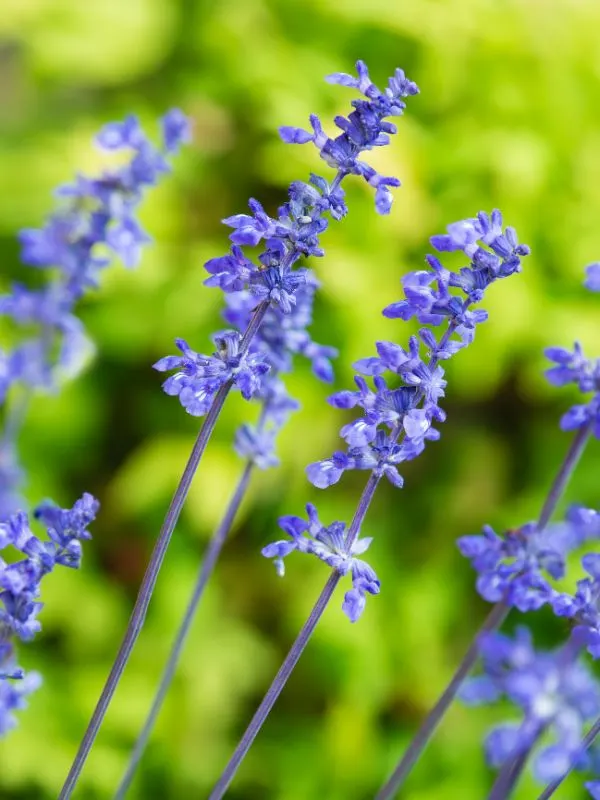
- Botanical name: Salvia officinalis
- Sun Requirements: Full sun to partial shade
- Soil Type: Well-drained soil, pH 6.0-7.0, rich in organic matter
Salvia is a perennial plant from the mint family. It is well-known for its vivid purple and blue blooms, which bloom from late spring to early fall. Salvia has various advantages as a peony companion plant. For one thing, it works well as an insect repellent, keeping pests away from your Peony.
Salvia also attracts helpful insects like bees and butterflies, which are necessary for pollinating the blooms and sustaining a healthy garden ecology. Salvia also has a deep root system that can aid in loosening and aerating the soil, allowing water and nutrients to get deeper into the Peony’s roots.
Finally, the vibrant colours of Salvia contrast beautifully with the thick, green foliage of peonies, making it an appealing addition to any landscape.
19. Sweet Alyssum
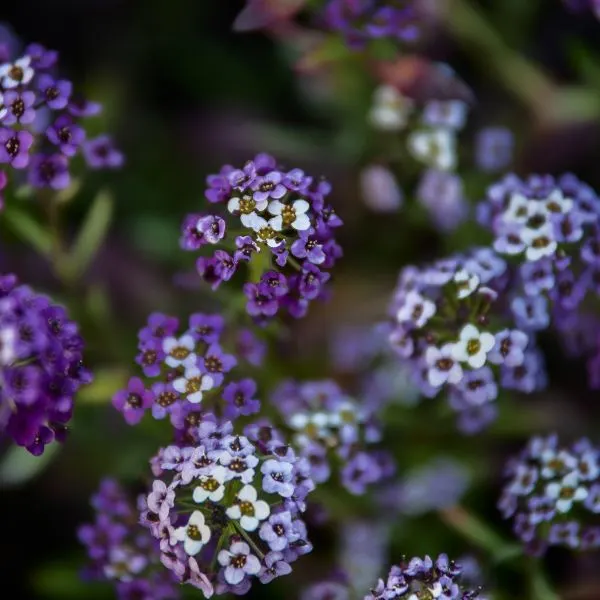
- Botanical name: Lobularia maritima
- Sun Requirements: Full sun to partial shade
- Soil Type: Well-drained soil, pH 6.0-7.5, tolerates poor soil
Sweet Alyssum is an annual plant native to the Mediterranean. Its exquisite white, pink, and purple blooms bloom from early spring through late summer. Sweet Alyssum is an excellent companion plant for peonies. For starters, it is a low-growing plant that suppresses weeds and creates live mulch.
This helps to preserve soil moisture and manage soil temperature, both of which are essential for healthy peonies. Second, Sweet Alyssum attracts helpful insects like ladybugs and lacewings, which eat aphids and other peony pests.
Finally, Sweet Alyssum’s delicate, sweet-smelling blossoms give a nice contrast to the strong, luxuriant petals of peonies, making it an excellent choice for creating a visually appealing landscape.
20. Tiarella
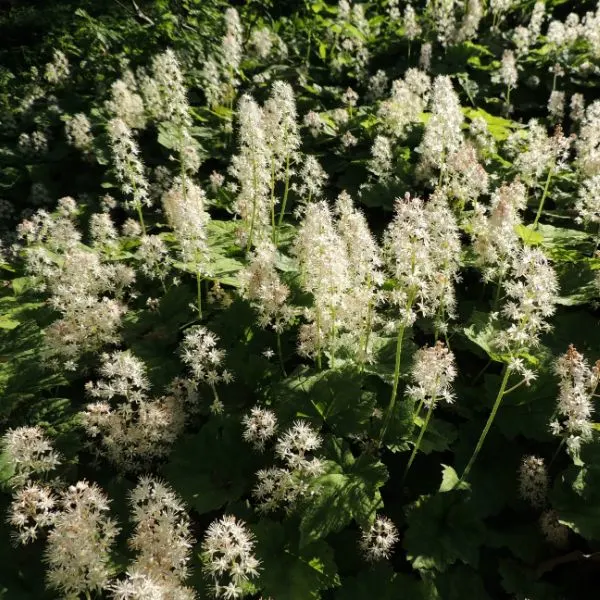
- Botanical name: Tiarella cordifolia
- Sun Requirements: Partial to full shade, avoid direct sunlight
- Soil Type: Moist, well-drained soil, pH 5.0-7.0, rich in organic matter
Tiarella is a North American native perennial plant. It’s well-known for its low-growing habit and lovely foliage, which includes heart-shaped leaves and white or pink blooms in the spring. Tiarella has various advantages as a peony companion plant.
For starters, its low-growing nature makes it a great ground cover, aiding in weed suppression and soil moisture retention. This is especially useful for peonies, which like well-drained, continuously wet soil.
Second, Tiarella attracts helpful pollinators like bees and butterflies, which help pollinate the blooms and keep the garden ecology healthy.
Finally, Tiarella’s delicate, white, or pink blossoms contrast beautifully with the large, luxuriant petals of peonies, making it an appealing addition to any garden.
21. Veronica
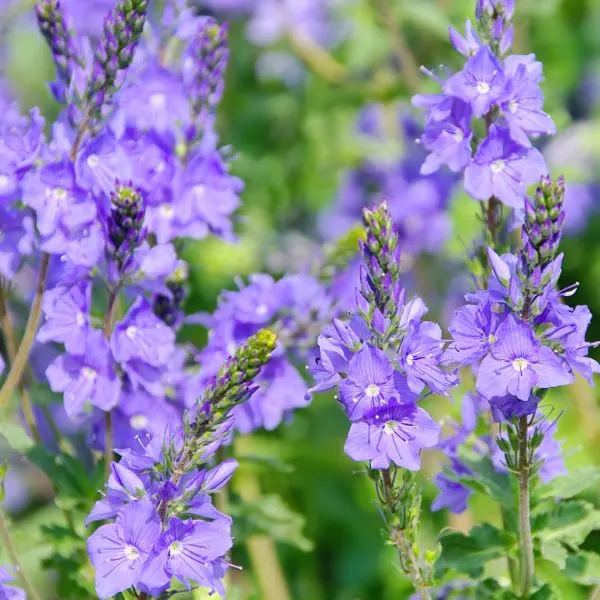
- Botanical name: Veronica spicata
- Sun Requirements: Full sun to partial shade
- Soil Type: Moist, well-drained soil, pH 5.0-7.5, rich in organic matter
Veronica is a low-growing perennial plant from late spring to early summer with stunning spikes of blue or purple flowers. It’s also known as Speedwell and is an excellent companion plant for peonies.
Planting Veronica beside peonies can create an eye-catching border for your yard. It’s a tough plant that can flourish in a range of growing situations, and its blue or purple petals will make a lovely contrast to the Peony’s large, rounded blooms.
Planting Veronica alongside peonies has the added benefit of repelling pests and attracting beneficial pollinators like bees and butterflies. These insects are crucial pollinators that may assist in enhancing the productivity of your garden and reduce pests that might harm your plants.
Veronica also has a deep root system that can assist in enhancing soil structure and decreasing erosion, making it an ideal companion plant for peonies.
Herbs
22. Catmint

- Botanical name: Nepeta spp.
- Sun Requirements: Full sun
- Soil Type: Well-drained soil, pH 6.0-7.5
Catmint is a low-maintenance perennial plant that blooms in late spring to early summer with gorgeous blue or purple flowers. It’s an excellent choice for gardeners searching for a low-maintenance plant that can flourish in a range of growing environments.
Catmint is also an excellent companion plant for peonies since it repels pests and attracts beneficial insects such as bees and butterflies. These insects are crucial pollinators that may assist in enhancing the productivity of your garden and reduce pests that might harm your plants.
Another advantage of combining Catmint with Peonies is that it can assist in enhancing soil quality. Catmint has a deep root system that can aid in soil construction and erosion reduction, making it a good companion plant for peonies. Catmint is also drought tolerant and may help you preserve water in your garden, which is a significant factor for many gardeners.
Ornamental Grasses
23. Japanese painted fern

- Botanical name: Athyrium niponicum
- Sun Requirements: Partial to full shade, avoid direct sunlight
- Soil Type: Moist, well-drained soil, slightly acidic to neutral pH
Gardeners wishing to add texture and depth to their peony beds can consider the Japanese Painted Fern. This lovely fern has delicate, lacy fronds that stand out against the Peony’s large, rounded blossoms. It’s a sturdy plant that can survive in a range of growing situations, making it an excellent choice for gardeners wishing to add colour and interest to their backyards.
One of the most significant advantages of combining Japanese Painted Fern with peonies is that it can assist in enhancing soil quality. The fern has a deep root system that can aid in soil construction and erosion reduction, making it a good companion plant for peonies.
Furthermore, the fern is shade tolerant and may give some shade from the scorching sun, which is a significant concern for many gardeners. Overall, pairing Japanese Painted Fern with peonies may assist in creating a lovely and functional landscape.
Trees
24. Baptisia
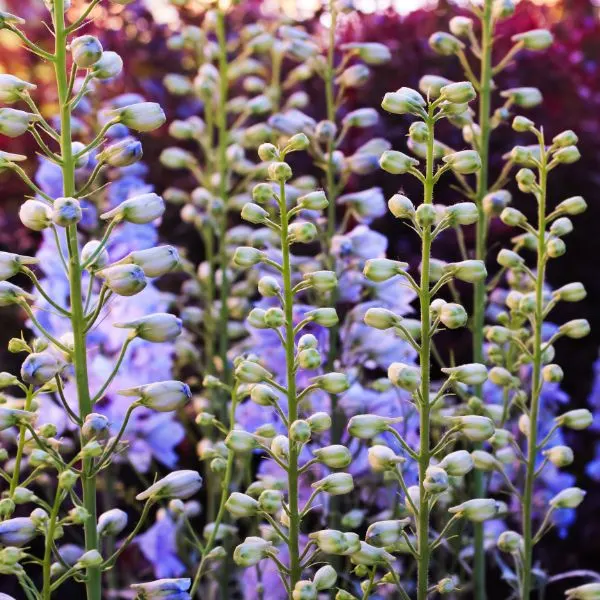
- Botanical name: Baptisia spp.
- Sun Requirements: Full sun
- Soil Type: Well-drained soil, pH 6.0-7.0
Baptisia, popularly known as False Indigo, is a lovely blooming plant in the pea family. It is native to North America and is popular in gardens due to its stunning blue, purple, or white blooms that bloom in late spring to early summer.
Aside from its decorative significance, Baptisia provides a number of advantages when utilized as a companion plant for Peonies. One of its primary advantages is its capacity to fix nitrogen in the soil.
Nitrogen is a key component for plants, and Baptisia can increase soil health by fixing nitrogen, resulting in healthier peony plants. Furthermore, Baptisia has deep roots that might aid in soil structure and drainage.
Because peonies like well-drained soil, planting Baptisia alongside peonies can provide an ideal growth habitat for these plants. Furthermore, Baptisia can attract pollinators such as bees and butterflies, which can benefit both the Peony and the overall garden ecology.
Shrubs
25. Hosta
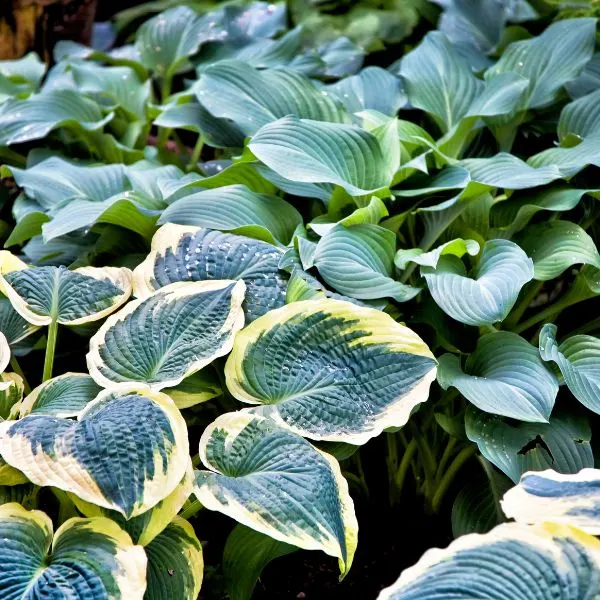
- Botanical name: Hosta spp.
- Sun Requirements: Partial shade to full shade
- Soil Type: Moist, well-drained soil, pH 6.0-7
Hostas are shade-loving plants that make wonderful peony companions. One of the primary advantages of combining hostas with peonies is that the hostas may offer shade for the peonies during the hot summer months.
Peonies are sun-loving plants, although they can be sensitive to direct sunshine and heat, causing their blossoms to fade. Planting hostas around peonies creates a microclimate that shields the peonies from the sun’s harsh beams.
Furthermore, hostas have huge leaves that might serve to keep weeds at bay around the peonies. They can also aid in the retention of moisture in the soil, which is beneficial to both hostas and peonies. Furthermore, hostas exist in a wide range of sizes, colors, and textures, making them adaptable and appealing companion plants for peonies.
26. Lamb’s Ear
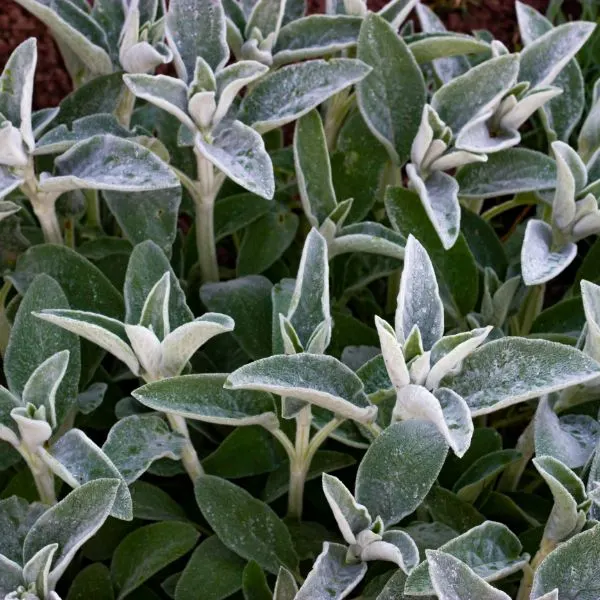
- Botanical name: Stachys byzantina
- Sun Requirements: Full sun to partial shade (4-6 hours of direct sunlight per day)
- Soil Type: Well-drained soil, pH 6-7, tolerates poor soil
Stachys byzantina, or Lamb’sLamb’s ear, is a soft, woolly-textured plant that may be a lovely addition to your landscape. It is drought-tolerant and low-maintenance, with gorgeous silver-green leaves that provide a distinctive texture to the landscape.
Lamb’s ear can give various benefits when planted as a companion plant to peonies. One of the primary advantages is that Lamb’sLamb’s ear may function as a ground cover, suppressing weed development around the Peony.
It can also aid in the retention of moisture in the soil, which benefits both the peonies and the Lamb’sLamb’s ear. Furthermore, Lamb’sLamb’s ear attracts pollinators such as bees, which benefits both the Peony and the garden ecology.
Furthermore, the fuzzy texture of Lamb’sLamb’s ear may create a great contrast to the smooth, shining texture of peony blossoms, providing a stunning aesthetic impact in the garden.
Bad Companion Plants for Peonies
Flowers
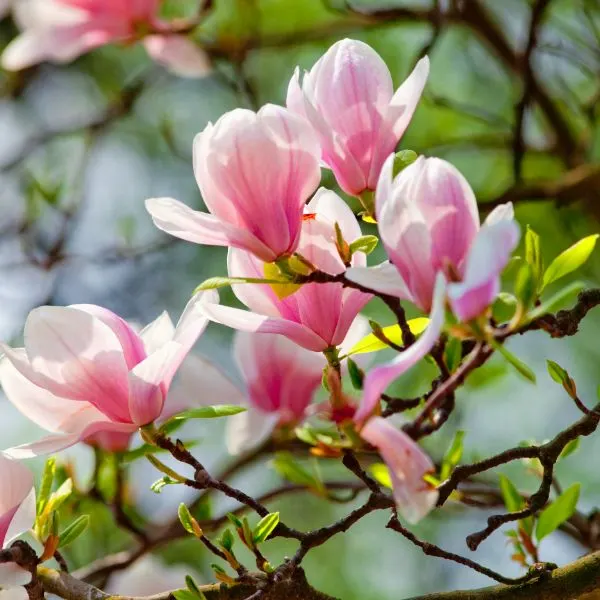
While there are several advantages to companion planting, it is also critical to be mindful of the possible downsides. There are several potential negative impacts to consider while planting Peonies with Lilacs, Rhododendrons, Azaleas, and Magnolias.
One of the most serious issues with growing Peonies besides these flowering shrubs is competition for resources. All of these plants require comparable growth conditions, such as acidic soil and consistent watering. Planting them too close together may cause them to compete for nutrients and water, resulting in stunted growth or poor performance.
Pest and disease management is another possible challenge. Some plants are more prone to pests and illnesses than others. Rhododendrons and Azaleas, for example, are particularly susceptible to lace bugs and spider mites, but Peonies are susceptible to botrytis and other fungal diseases. Planting these plants in close proximity can produce an environment conducive to the spread of pests and illnesses.
Finally, there is the matter of visual attractiveness. While some gardeners enjoy the combination of Peonies with these blooming shrubs, others may find the difference in bloom time or colour unpleasant. When choosing companion plants, keep the overall design and aesthetic effect of your garden in mind.
Trees
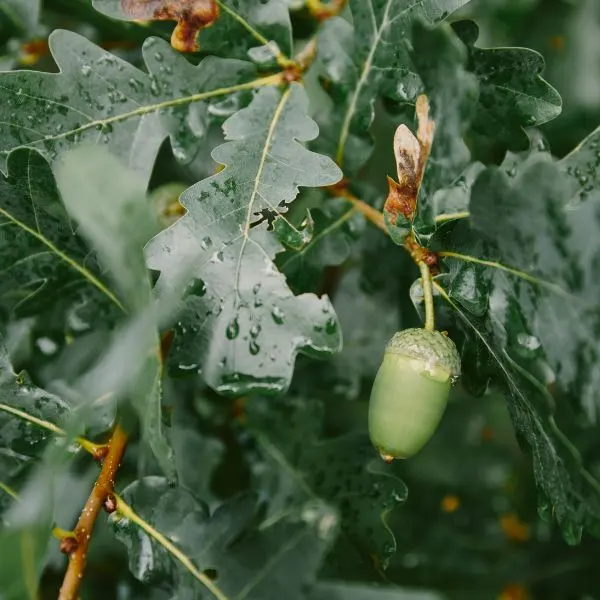
There are possible detrimental impacts that can occur when coupling Pine trees, Walnut trees, Norway spruce, Dogwood trees, Oak trees, and Hemlock trees with Peonies.
One of the primary challenges with combining Peonies with these trees is resource competition. Trees have deep root systems that may take water and nutrients from the soil, leaving little room for Peonies with shallow roots. This can cause slowed development and fewer flowers in peonies.
Furthermore, some of these trees, such as walnut trees, emit compounds into the soil that are poisonous to other plants. Juglones are compounds that can induce the yellowing of Peony leaves and limited development.
Trees can sometimes provide too much shadow for Peonies, restricting their exposure to sunshine and hindering development. This can lead to weak, wiry stems and tiny, unappealing flowers.
While Pine trees, Walnut trees, Norway spruce, Dogwood trees, Oak trees, and Hemlock trees are all lovely on their own, they may not be the ideal Peony partners. Before combining plants in a garden, it is essential to thoroughly analyze their compatibility.
Shrubs
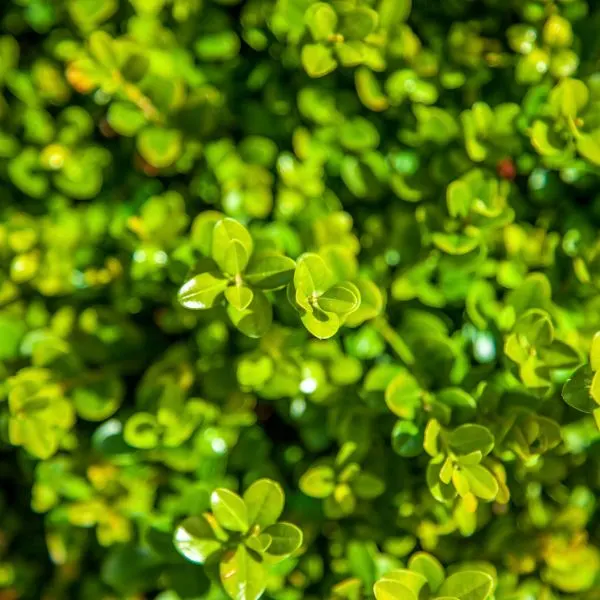
Certain shrubs, such as Boxwood, Privet, Juniper, Yews, Cedars, Rhododendrons, Azaleas, and Holly bushes, can be harmful to Peonies’ growth and development.
These shrubs are allelopathic, which means they produce compounds that hinder the development of other plants surrounding them. Peonies might suffer from stunted growth, fading foliage, and even mortality as a result of this. Furthermore, these shrubs might compete for resources like water and nutrients, limiting Peony’s growth and output.
Furthermore, shrubs such as Boxwood, Juniper, and Cedars can cast too much shade on Peonies, restricting their exposure to sunshine and affecting their development and flowering. Rhododendrons and Azaleas have comparable soil acidity and drainage requirements as Peonies, which might lead to competition for resources and, as a result, diminished development.
Finally, while companion planting may be helpful to a garden, it is critical to be mindful of the possible negative impacts of some plant pairings.
Planting Peonies with Boxwood, Privet, Juniper, Yews, Cedars, Rhododendrons, Azaleas, and Holly bushes should be avoided, or at least separated, to avoid competition and harmful effects on their development.
FAQs
What do you support peonies with?

You can support the peonies by using Peony cages to prevent them Peony from overturning or using Tomato cages made of wire to sustain tiny flowers.
Also, Tall plant stakes can be used to make a DIY plant support structure for a huge peony bush. Making plant supports for peonies with plastic ties to secure peonies is also a good way to go about it.
What makes peonies happy?

Peonies prefer full light and well-drained soil. It is also critical to have good air circulation around the facility. These growth conditions aid in the avoidance of the peony’ sole severe disease problem: botrytis.
How long do peonies live?
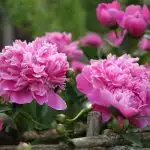
A peony plant may live a long life if properly cared for and preserved in ideal circumstances. It can even live to be over 100 years old.
Can you split and replant peonies?

Divide the cluster into parts using a sharp knife. Each division should have three to five buds as well as a healthy root system. When transplanting, dig a hole large enough to accommodate the Peony’s whole root system. Place the plant or division in the hole with the buds 1 to 2 inches below the soil level.
How fast do peonies grow?

Peonies typically take three years to fully mature. Flowers planted from the root of an older established plant or in a bucket purchased from your local garden store may have one or two blooms the first year. What exactly is this? While peonies do not require frequent watering, it is beneficial in the first year after planting.
Will peonies bloom after transplanting?

Plants will not blossom the following spring after being transplanted. You may get a few flowers the second year after planting, but blossom counts should increase in the third and fourth years.
Why are my peony buds dying?

This might include too much shadow – peonies love the full sun – a lack of proper fertilizer in poor soil, or a period of dryness in spring when the plants are actively growing and generating buds.
Wrapping up
Peonies are a popular perennial blooming plant that thrives with adequate care and attention. These plants have huge, beautiful flowers in a variety of hues that are frequently used in bouquets and floral arrangements. Peonies are also said to be long-lived plants, with some types surviving up to 100 years if properly cared for. This post will go through the best growth conditions for peony and companion plants, as well as how to optimize soil health and insect management.
Peonies need well-drained soil with a pH of 6.0-7.0 and at least six hours in direct sunlight every day. They prefer lush, healthy soil with a high organic matter content. When planting, dig a hole at least 18 inches deep and broad, then amend the soil with compost or well-rotted manure to increase its texture and fertility.
Peonies do not need to be fertilized on a regular basis, but a moderate dose of balanced fertilizer in early spring can stimulate healthy growth and blooms. Over-fertilization can cause the plant to produce fewer blooms and may even cause the plant to die.
Alliums, catmint, geraniums, and lady’s mantle are all good companion plants for Peony. These plants can assist in keeping pests at bay while also improving soil health. Planting peonies near trees or bushes should be avoided because they may compete for water and nutrients. Additionally, to limit the chance of insect and disease issues, maintain the area surrounding the Peony clean of garbage and weeds.
To summarize, peonies are lovely and long-lasting plant that demands adequate care and attention to grow. You can assist in ensuring that your peonies produce huge, healthy flowers year after year by providing the correct growth conditions and adding companion plants.
More plant stuff
